Both kimchi and sauerkraut are super healthy foods but which one is healthier?
While most sources will generalise that Kimchi is slightly more nutritious than sauerkraut, there are a few specifics to take into account which can switch the balance.
Table of Contents
What is Sauerkraut?
You might be forgiven for thinking that sauerkraut comes from Germany but in fact its origins lie in China where it’s been eaten for around about 2000 years.
Germany and the rest of Europe have adopted this super food and westernised it by making it readily and conveniently available in packets, tubs and tins.
Remember that if you buy sauerkraut off the shelf rather than from the fridge area, it will not have live probiotics in it and the health benefits will be lost.
Sauerkraut’s usually made from shredded white cabbage which is fermented by salt to create a deliciously crunchy, tangy addition for sandwiches, burgers, salads and more.
It often has caraway seeds added and can also be made with juniper berries, celery seeds, fennel, cumin seeds (and other flavourings).
You can find sauerkraut with carrot in it, or even beetroot.
But traditional sauerkraut is made of cabbage and the main flavour of sauerkraut is always cabbage.
What is Kimchi?
Kimchi’s a collective term for a Korean method of fermenting vegetables, with cabbage being the best known ingredient.
It’s been handed down from generation to generation for the last 4000 years and is served in almost every household – and can be eaten with every meal – in Korea.
Everyone has their own kimchi recipe which has evolved over the years.
Standard kimchi usually includes a fish sauce or fermented seafood product like shrimp so be sure to make your own or check that it’s vegan on the label.
Kimchi’s often made from Chinese napa cabbage but also includes lots of other ingredients and can be made without cabbage at all. Daikon radish, spring onion and cucumber are other popular kimchis.
As well as the main ingredient, kimchi will usually have other veggies in it, like carrot or beets as well as additional ingredients like apple, garlic, ginger and chilli.
And example of homemade cabbage kimchi could include Chinese cabbage, apple, beetroot, carrot, ginger, garlic and chilli.
There are over 200 different types of Kimchi so there isn’t ‘one’ correct kimchi recipe.
It’s often made spicy but not always.
What’s the Difference Between Sauerkraut and Kimchi?
Sauerkraut and kimchi are both Asian foods (yes even though Germany is famous for sauerkraut), both use salt for fermentation and have cabbage as the main ingredient. But there are some differences between them.
One of the main differences is that Kimchi is a collective term for the preparation and fermentation of various veggies and a plethora of ingredients while Sauerkraut refers to one dish.
Plus, kimchi incorporates many different ingredients and sauerkraut just two.
Sauerkraut is not usually spicy while kimchi can be hot and fiery.
Which is More Healthy, Kimchi or Sauerkraut?
Both kimchi and sauerkraut are teeming with probiotics and super healthy for the gut and for overall health.
Kimchi usually has more probiotics than sauerkraut and has a wider range of nutrition because of the additional ingredients. Both kimchi and sauerkraut are rich in vitamin C.
However, for anyone with sensitivities or allergies to seafood, shop bought kimchi is best avoided as it usually contains seafood or fish sauce (unless labelled vegan of course).
And for anyone on a low salt diet, kimchi has a higher salt content than sauerkraut.
Those points aside and all things being equal, kimchi has the edge over sauerkraut.
But if you have a homemade sauerkraut, full of probiotics vs a shop bought kimchi, then the homemade sauerkraut will likely be much more healthy than the kimchi.
And conversely, if you buy store-bought sauerkraut off the shelf (i.e. not in the fridge), the sauerkraut will be pasteurised and no longer contain the probiotics so in that scenario, kimchi would be much healthier.
So when deciding which is more healthful it’s important to weigh up the specifics of each individual on its specific merits.
Kimchi and sauerkraut are both extremely health-promoting foods. If both are homemade, or at least ‘live’, then the kimchi tends to have a slightly higher nutritional profile due to the variety of ingredients. However, kimchi is usually higher in salt than sauerkraut and does usually contain seafood.
Final Thoughts on Kimchi Vs Sauerkraut.
I absolutely both kimchi and sauerkraut. But kimchi has to take first place. It’s just sooo uniquely delicious.
If you get into the swing of making them it’s just perfect to open the fridge and see a jar of fermented deliciousness sitting there staring right back at you!
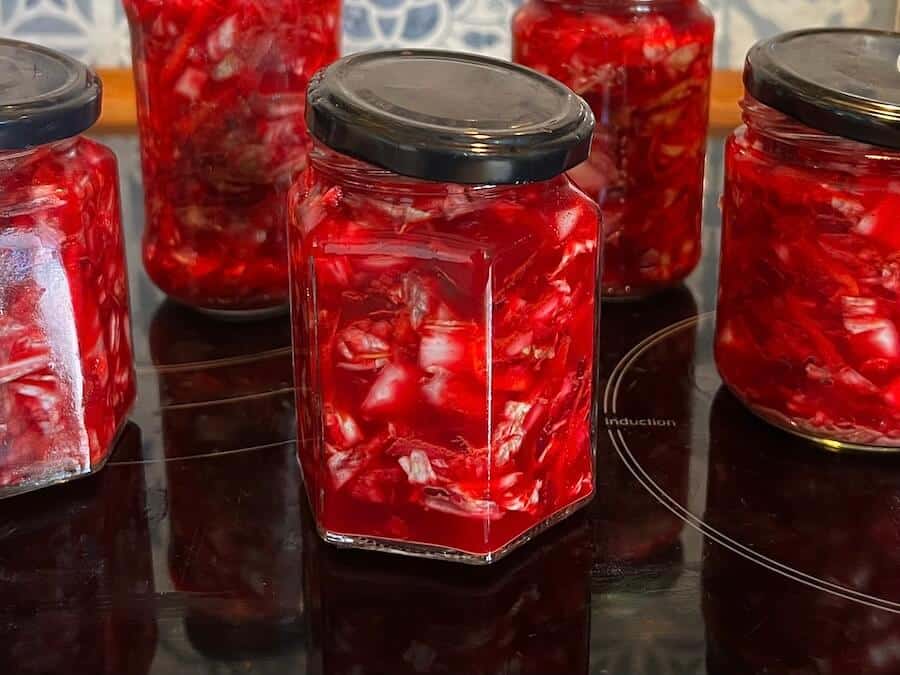
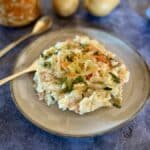

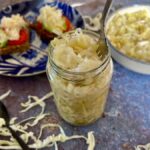
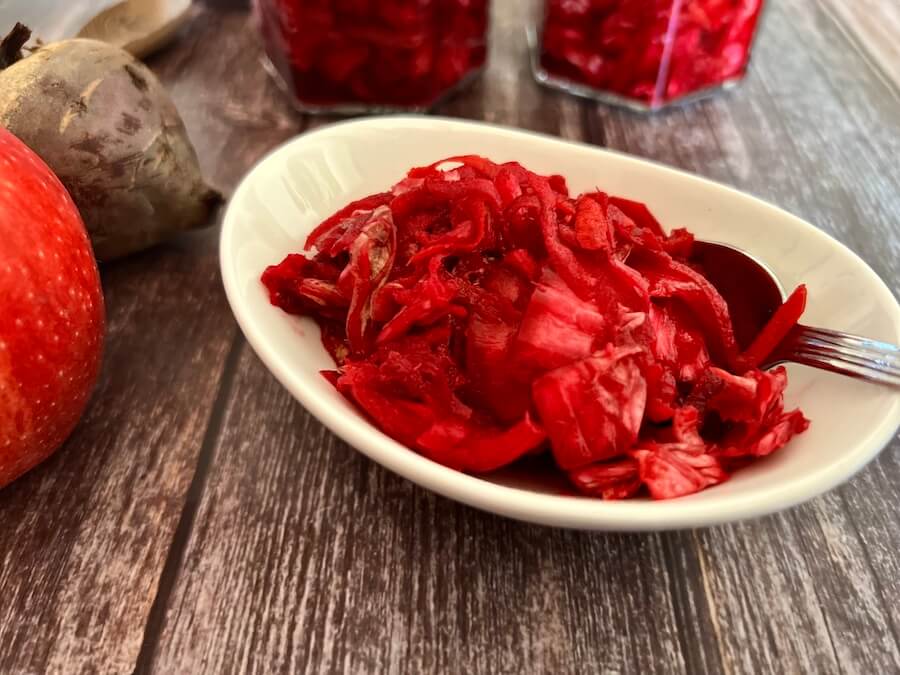


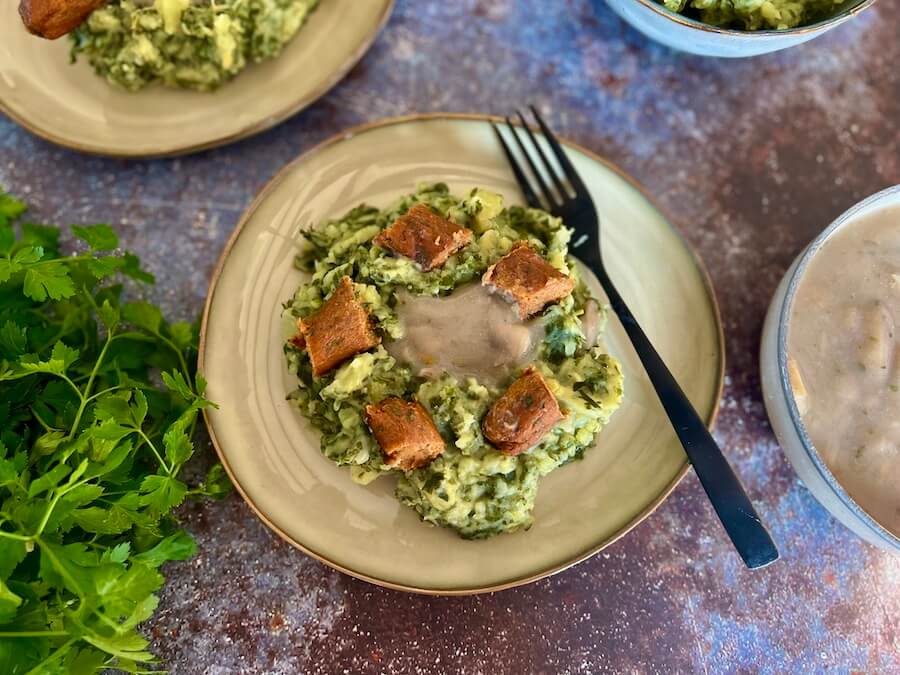
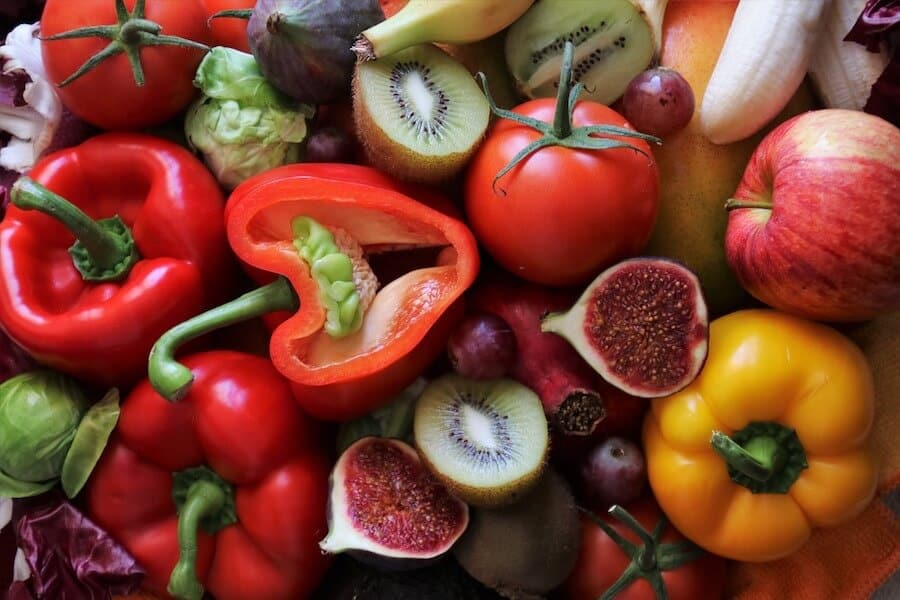
Excellent article. Many thanks.
Thank you so much for visiting – I’m glad you liked the article.